Oceans and Seas


Water is arguably one of the most important substances on Earth, essential not only for flora and fauna, but for sustaining human life. As such, waterways are crucial to every aspect of our existence — which also includes the largest bodies of salted water that we classify as oceans and seas. Read on to discover the profiles of all major oceans and seas in the world!
Oceans Around the Globe
Although our planet is called Earth, 71% of its surface is actually covered by water, according to the National Oceanic and Atmospheric Administration (NOAA). For the purposes of navigation and mapping, this mass of saltwater has been divided by humanity into many different oceans and seas, but in reality, everything is connected in one continuous global ocean.
This global ocean is integral to the sustenance of all life on Earth. Climate, weather, atmospheric gasses, wind, and many other vital environmental aspects are all reliant on the ocean. It dictates climatic zones around the globe and this in turn influences where habitats like deserts or rainforests exist. To top it all off, humanity relies on the ocean for so much of its modern-day luxuries and necessities.
The global fishing industry is worth $233 billion, much of the world’s fossil fuels are located underneath the sea and it is a major means of transport as part of the shipping trade. With this in mind, below is a rundown of every body of water classified as an ocean or sea, with an overview of their characteristics and importance.
What Are the 7 Seas and 5 Oceans?
The idea of the seven seas has been part of popular culture for centuries. As civilizations began to explore the world around them, they discovered different bodies of water. In order to understand them better and document them for navigation, the seas were named and divided according to the cultures that found them. In early societies, the seven seas were actually known to be lakes, often located in the vicinity of their major towns.
For example, in early Jewish society, the seven seas were made of nearby lakes like the Sea of Sodom (The Dead Sea) or the Sea of Health (The Red Sea). Arabic societies in the 9th century had mostly explored the East of the planet, so their classification of the seven seas reflected this, including the Persian Gulf known then as the "Sea of Fars" and the Singapore Strait as the "Sea of Salah".
As western societies explored more of the world and discovered the Americas, the understanding of the world’s seas became much broader. The so-called seven seas moved from local knowledge bases to a comprehensive picture of how the ocean was spread across the entire world. By the 1500s, the seven seas were defined as the Pacific Ocean, Atlantic Ocean, Indian Ocean, Arctic Ocean, Mediterranean Sea, Caribbean Sea, and the Gulf of Mexico.
In reality, the idea of seven seas and five oceans is outdated and imprecise. Often they were defined for navigation purposes and to have a common system that merchants could all use to understand each other. Today, things are much more precise thanks to satellite mapping and now the whole world knows the exact boundaries of every body of water on Earth.
Oceans and Seas Today
Today, the world’s ocean is divided into five separate areas: the Pacific, Atlantic, Indian, Southern, and Arctic. 97% of all the Earth’s water is contained within these saltwater oceans, and the rest is found in freshwater lakes and rivers located inland. Within the larger oceans lie a number of seas that are understood to be smaller and often bounded partially or fully by land.
Now, both oceans and seas have never been more at the center of the world’s most crucial issues than now. In terms of politics, countries in Asia are fighting politically over ownership of the South China Sea whilst oceans in general are major parts of military strategy.
Perhaps most important of all, the oceans are deeply important to the future path of climate change. Habitats like coral reefs and sea grass fields are under threat from warming oceans and altered acidity. However, they also offer a solution as the largest carbon sink on the planet. With this in mind, it is critical that we know our oceans in as much detail as possible.
Arctic Ocean

Area: 5,440,000 sq. mi, 14,090,000 sq. km Average Depth: 3,953 ft., 1,205 m. Greatest Known Depth: 77°45'N; 175°W — 18,456 ft., 5,625 m.
The Arctic Ocean is located in the Northern Hemisphere and is centered around the North Pole. It is the smallest of the five oceans of the world in terms of area and also the shallowest. Throughout winter, the volume of the ocean shrinks as the extent of the Arctic sea ice increases, significantly covering the surface. Due to global warming, Arctic sea ice coverage in the summer has been reduced by 50% since 1979.
This has wide-ranging impacts on the ocean’s flora and fauna. On top of the sea ice, many highly specialized species of animals, such as the polar bear, are becoming increasingly threatened by the reduction in coverage as they rely on the ice for shelter and food. Underneath the waves, melting ice is opening up the waters to increased fishing and therefore endangering species like the beluga whale.
The melting ice is opening a new era for the Arctic Ocean as it reveals potential shipping lanes and resources to claim. This is already manifesting in political disputes over access to oil reserves and the rights of the indigenous population.
Atlantic Ocean
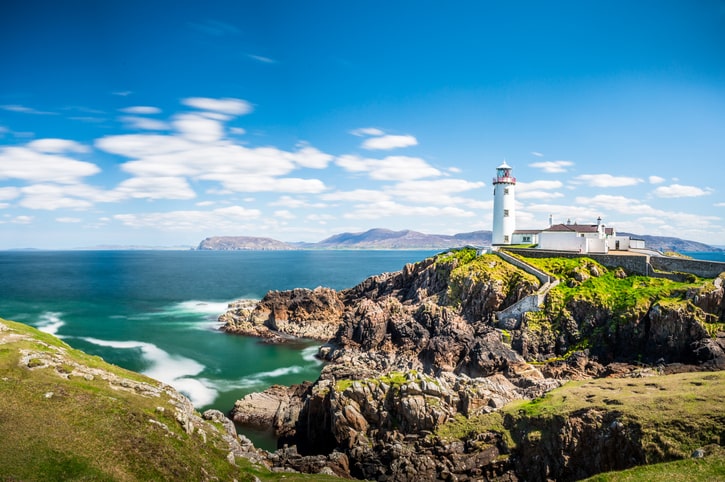
Area: 29,637,900 sq. mi, 76,762,000 sq. km Average Depth: 12,880 ft., 3,926 m. Greatest Known Depth: Puerto Rico Trench — 30,246 ft., 9,219 m.
Named after the Greek titan Atlas, the Atlantic is the second-largest ocean in the world and covers 20% of the Earth’s surface. It stretches from the Arctic in the north, passing down between Europe, the Americas, and Africa and ending just before the Southern Ocean. It is split in two by the Equatorial Counter Current, the North Atlantic, and South Atlantic. Throughout history, the Atlantic has been at the center of many key events, such as Christopher Columbus’ crossing to discover the Americas in 1492 and the Atlantic slave trade which began in the 15th century.
Apart from trade routes, the Atlantic’s other major economic factor is fishing. In the 20th century, fishing was largely unregulated which led to a rapid decline in fish stocks, reaching a low point in the 1990s. Since then, regulations on catch numbers have seen fish stocks rise but they are yet to reach their original numbers. Another environmental issue in the Atlantic is waste management. Due to the convergence of certain ocean currents, much of the world’s rubbish has been collected as the North Atlantic garbage patch which is hundreds of kilometers in extent.
Indian Ocean
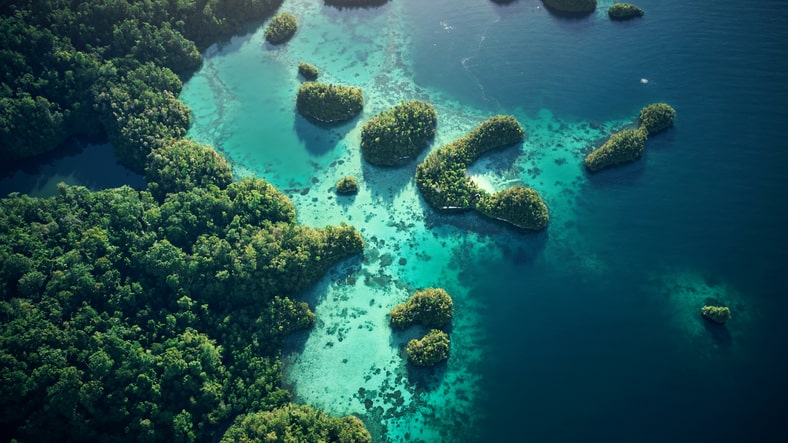
Area: 26,469,500 sq. mi, 68,556,000 sq. km Average Depth: 13,002 ft., 3,963 m. Greatest Known Depth: Sunda Trench — 24,460 ft., 7,455 m.
The Indian Ocean is the third largest in the world and sits between Africa, India, South East Asia, and Australia. The International Hydrographic Organization first designated the Indian Ocean as inclusive of the Southern Ocean, but in 2000 the two were separated.
The Indian is the warmest ocean and therefore supports a host of unique marine life. The warmth supports the largest phytoplankton groupings in the world and this means there is an increased capability to support fish populations. In turn, this attracts many different countries, as far away as Korea and Russia, to exploit the stocks through fishing species like tuna. Endangered species include the Dugong, Irrawaddy dolphin, and even phytoplankton which have decreased by 20% in number over the past 60 years.
Pacific Ocean
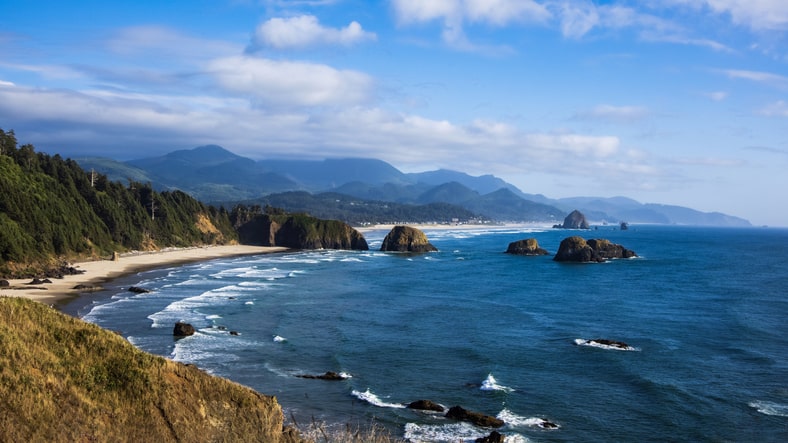
Area: 60,060,700 sq. mi, 155,557,000 sq. km Average Depth: 13,215 ft., 4,028 m. Greatest Known Depth: Mariana Trench — 36,198 ft., 11,033 m.
The Pacific is the largest ocean in the world and is home to the deepest place on Earth in the Mariana Trench called Challenger Point. It also has the largest expanse of open ocean. Divided into the North Pacific and South Pacific, it is bounded by Australia, the Philippines, Russia, and the Americas and is home to some of the most remote places on Earth.
Over 25,000 islands are located in the Pacific Ocean, many of which are active volcanoes grouped in an area known as the Pacific Ring of Fire. Other islands are inhabited and form parts of minor nations such as Tonga, Fiji, and the Marshall Islands. Humans first settled in the Pacific 70,000 years ago, reaching Papua New Guinea and Australia first and later migrating to the now well-known island nations. Kiribati, a nation of 32 atolls, straddles the international date line that runs through the center of the Pacific, therefore existing as the furthest country away from GMT and the only one in all four hemispheres of the world.
Home to 50% of the world’s ocean waters, it also hosts the Great Pacific garbage patch which contains an estimated 1.8 trillion pieces of litter. The ocean was also the site of the most nuclear bomb tests in history and the Marshall Islands are more radioactive than Chornobyl in some areas. Many countries such as Peru and Chile rely heavily on fishing to support their economies which are periodically affected by the El Nino weather phenomenon.
Discover more in-depth oceanic information, including facts, history, geography, and animals, with our Pacific Ocean Profile!
Southern Ocean (or the Antarctic Ocean)
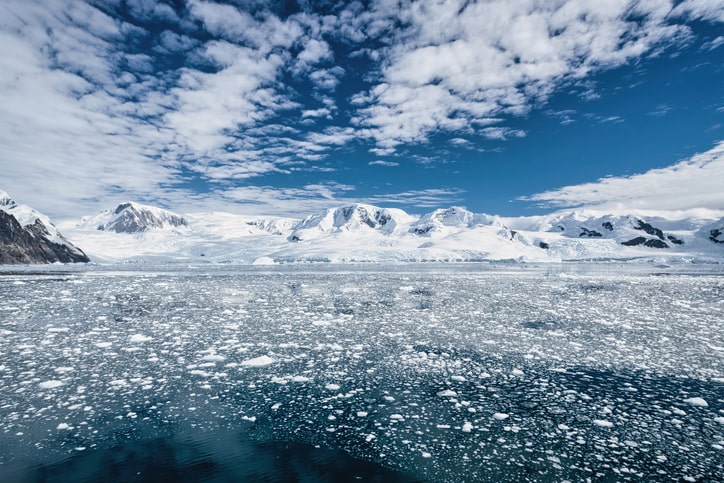
Area: 7,848,300 sq. mi, 20,327,000 sq. km Average Depth: 10,728 ft., 3,270 m. Greatest Known Depth: South Sandwich Trench — 23,736 ft., 7,235 m.
Also known as the Antarctic Ocean, the Southern Ocean is centered around Antarctica in the South Pole. There has been debate over whether the Southern Ocean should even be classified as a separate body of water, but research into southern circulation currents, which begin at the South Atlantic Ocean, found them to be significantly strong enough to warrant a distinction.
Where Antarctic glaciers meet the Southern Ocean, significant ice melt occurs. This is normal, but due to global warming, more ice is melting into the ocean at an increased rate, making Antarctica one of the areas contributing most to sea level rises. On the flip side, the icebergs that form in the Southern Ocean every year hold enough fresh water to serve every person on Earth for months. Other natural resources include huge, untapped oil reserves and extensive manganese nodule fields.
Andaman Sea
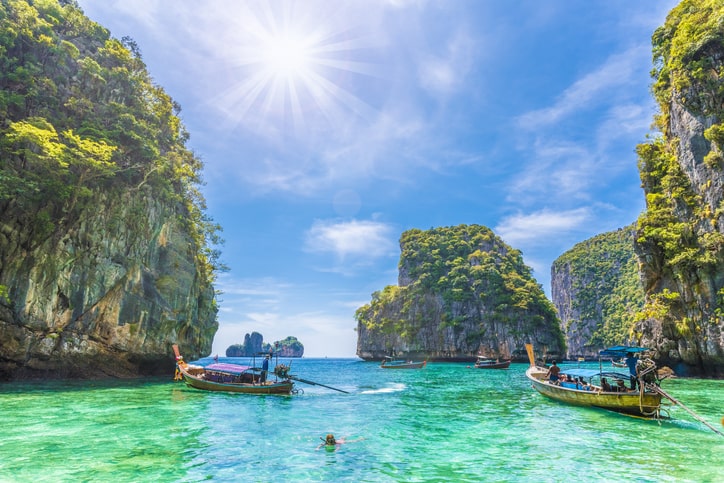
Area: 308,000 sq. mi, 797,700 sq. km Average Depth: 2,854 ft., 870 m. Greatest Known Depth: Off Car Nicobar Island — 12,392 ft., 3,777 m.
The Andaman Sea is known as a marginal sea, meaning a body of water that is contained within or bounded by an ocean. It is found in the northeastern portion of the Indian Ocean, between the Andaman Islands and the west coast of Myanmar and Malaysia. The Andaman seabed is at the boundary of two tectonic plates and therefore experiences regular tectonic activity.
Its habitat is dominated by seagrass meadows and mangrove forests which provide shelter to many endangered species, including multiple species of sea turtle. The habitats also make it a bountiful area for fishing with Thailand deriving 19% of its yearly harvests from the Andaman. The other major economic use is tourism, with the Nicobar Islands home to rich coral reefs, some of which are candidates for UNESCO World Heritage Site status.
Arabian Sea
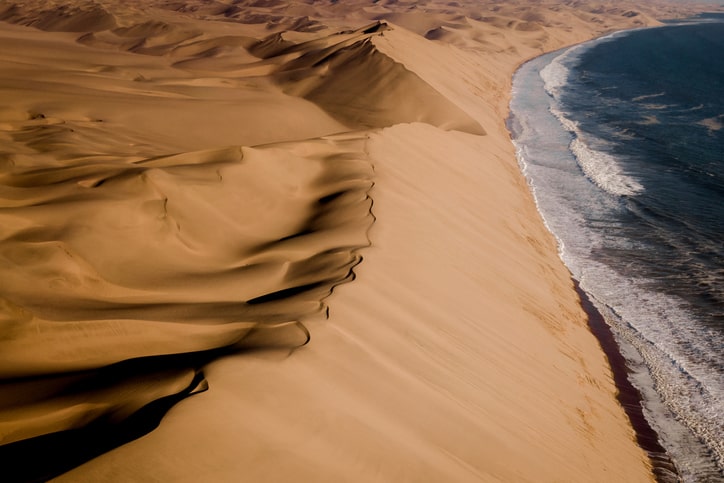
Area: 1,491,000 sq. mi, 3,862,000 sq. km Average Depth: 8,970 ft., 2,734 m. Greatest Known Depth: Wheatley Point — 15,262 ft., 4,652 m.
The Arabian Sea sits in the northwest of the Indian Ocean, in a pocket below Pakistan and Oman and to the west of India. It is connected to both the Persian Gulf and the Red Sea, providing a bridge between the Arabian Peninsula and the ocean at large. In ancient times, the Greeks referred to the area as the Erythraean Sea.
Due to its proximity to major oil exporting nations and the Suez Canal, the Arabian Sea is part of the busiest shipping lanes in the world and the busiest ports like Salalah in Oman. Major cities on the coast include Mumbai, Muscat, Abu Dhabi, and Dubai. The tiny island of Zalzala Koh was formed in 2013 after an earthquake but had entirely submerged beneath the sea by 2016.
Aral Sea
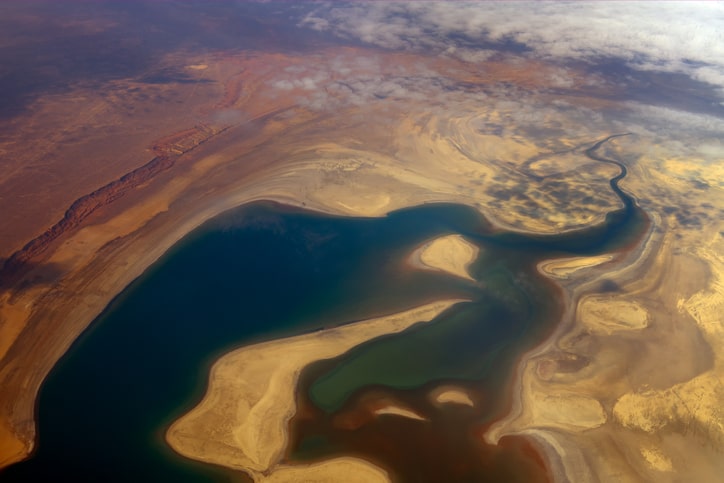
Area: 6,626 sq. mi, 17,160 sq. km Average Depth: 29 ft., 8.7 m. Greatest Known Depth: Exact location unknown — 138 ft., 42 m.
The Aral Sea is an entirely landlocked body of water and used to be the fourth-largest lake in the world. It is split in two by the border between Kazakhstan and Uzbekistan, with a drainage basin that encompasses Turkmenistan, Kyrgyzstan, Tajikistan, and Afghanistan. It has become one of the most renowned examples of environmental degradation after its surface area reduced from 68,000 km2 in 1960, to what remains today as two much smaller separate lakes: the North and South Aral Seas.
Soviet infrastructure projects in the mid-20th century diverted the major tributaries away from the Aral, leading to a reduction to 10% of its original size. At its lowest point, the Aral was made up of just two relatively small lakes, with the southeastern portion redesignated as the Aralkum Desert. Since 2014, there has been evidence to show that replenishment of the lake’s volume is working, with rising volume levels in the North Aral and the center.
The Sea naturally has low levels of biodiversity but still a large number of unique, endemic species, many of which were lost when the Sea receded. However, rising water levels have reduced the salinity of the Aral Sea, which has paved the way for a recovery in native fish species.
Baltic Sea
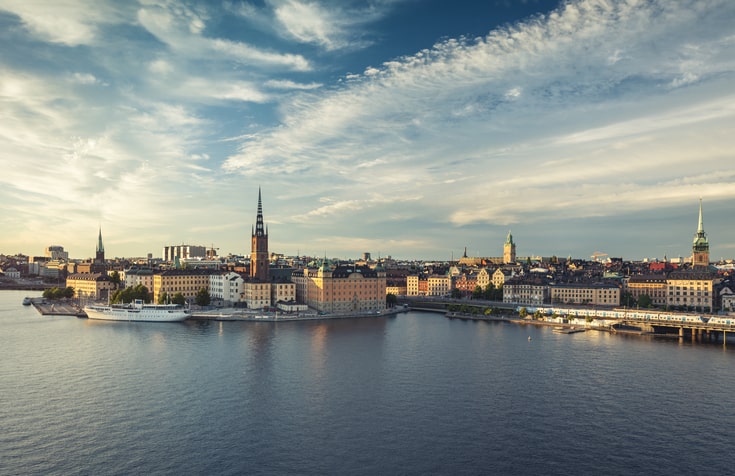
Area: 163,000 sq. mi, 422,200 sq. km Average Depth: 180 ft., 55 m. Greatest Known Depth: Landsort Deep — 1,380 ft., 421 m.
As one of the most enclosed seas that are still openly connected to the world ocean, the Baltic is vitally important to a variety of its surrounding countries. It is bound by Denmark, Germany, Poland, Latvia, Lithuania, Estonia, Russia, Finland, and Sweden. Historically, Denmark served as the geographical and literal gatekeeper of the Baltic Sea due to the narrow entrance channels upon which its islands are situated. Up until 1857, Denmark charged a toll for any ships passing through the channels to enter the Baltic which amounted to a third of the country’s yearly income.
The Baltic remains a major feature of European geopolitics. The Nord Stream gas pipeline from Russia runs beneath the sea and is a political leverage point over Western Europe. A second pipeline has been built along the same route, but the war in Ukraine and the resulting worsening of international relations have halted the project. The Baltic would also become crucial to any larger-scale military operations as major seaports for Russia, Germany, and Scandinavia lie on its shores.
Bering Sea and Strait
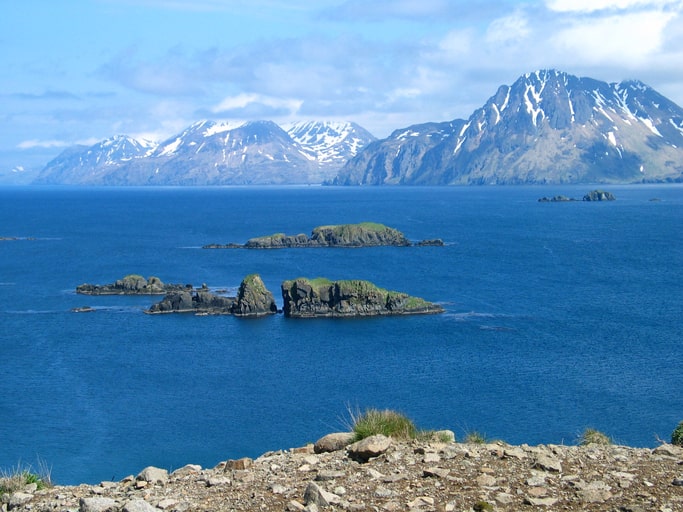
Area: 884,900 sq. mi, 2,291,900 sq. km Average Depth: 5,075 ft., 1,547 m. Greatest Known Depth: Bower’s Basin — 15,659 ft., 4,773 m.
The Bering Sea and Strait separate Russia from the USA and more expansively, Eurasia from North America. During the most recent ice age, scientists believe that sea levels were low enough in the Bering Strait for a land bridge to form. Humans and other large mammals would have migrated from Eurasia to North America across the dried strait.
Home to the largest submarine canyon in the world, the Zemchug Canyon, the Bering Strait has a vibrant ecosystem thanks to favorable currents and nutrient upwelling. Fish biodiversity is high and this supports a large number of seabird species that rely on the Bering for fertile breeding grounds. It also provides both Russia and the USA with valuable fisheries, worth $600 billion and $1 billion respectively.
The sea is named after Vitus Bering, a Danish explorer who became the first to explore the area by sailing from the North Pacific Ocean to the Arctic. Geopolitically, the Bering is important because it presents the smallest distance between Russia and the USA and a point of possible conflict over fishing rights.
Black Sea
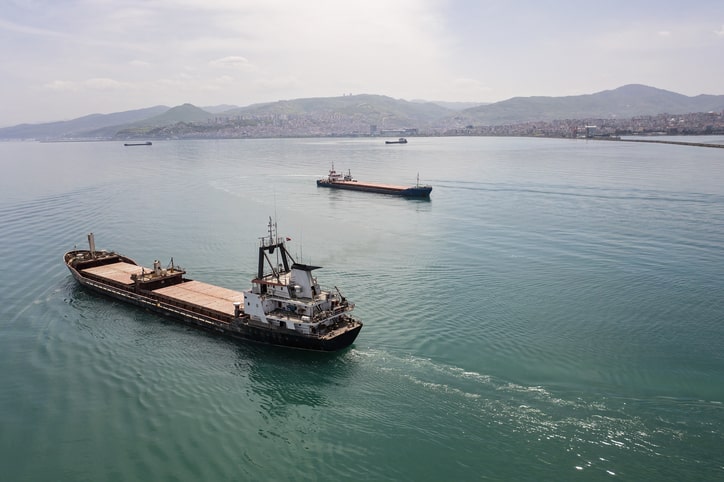
Area: 168,500 sq. mi, 436,402 sq. km Average Depth: 4,111 ft., 1,253 m. Greatest Known Depth: Euxine Abyssal Plain — 7,257 ft., 2,212 m.
The Black Sea sits in the middle of various geographic zones, with Europe to the north and west, the Caucasus in the east, and Turkey in the south. Historically, the Black Sea was central to the wealth of the Hanseatic League, a prosperous medieval economic alliance. Today, the Black Sea remains important for geopolitical reasons. Russia has tried to increase its control over the area recently and headquarters its Black Sea Fleet in Sevastopol after it annexed Crimea from Ukraine in 2014. During Russia’s invasion of Ukraine in 2022, the Black Sea was a key route of attack and the Russians used their fleet to blockade grain exports from Ukraine.
It is the largest expanse of brackish water in the world which supports a unique ecosystem of animals that thrive in these specific conditions. The large number of rivers that drain into the Black Sea also deposit high volumes of nutrient-rich sediment to support good levels of phytoplankton. Rapid industrial expansion throughout the 20th century saw increased levels of pollution which negatively affected the ecology of the Black Sea, although regulation brought in over the millennium has allowed the ecosystem to recover.
Caribbean Sea
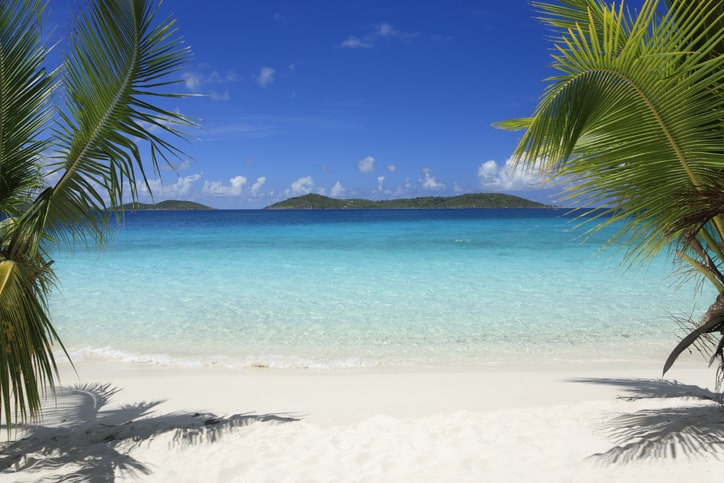
Area: 1,063,000 sq. mi, 2,754,000 sq. km Average Depth: 7,217 ft., 2,200 m. Greatest Known Depth: Puerto Rico Trench — 25,217 ft., 7,686 m.
The Caribbean Sea is defined by a series of Caribbean islands to the north and east, Central America to the west, and South America to the south. The average climate is tropical and hurricanes are common in a season that stretches from June to November. Trade wins create a northerly current and a consequential upwelling of nutrients near the Yucatan, leading to bountiful fish stocks. However, the main economic function of the Caribbean is tourism. The warm waters, coral reefs, and sandy beaches mean it is an attractive destination.
Christopher Columbus was the first European to explore the Caribbean and founded colonies in modern-day Haiti/Dominican Republic. Further exploration in the 18th and 19th centuries led to a developing level of scientific interest. The area is home to 9% of the world’s coral reefs which are vital to both environmental diversity and the area’s attraction to tourists. However, up to 95% of the reefs have experienced some form of coral bleaching due to rising temperatures in the Caribbean. The modern-day Caribbean presents a paradox for local countries: while the ecosystem attracts human activity that is crucial to the economy, it also acts as the main source of environmental degradation.
Caspian Sea
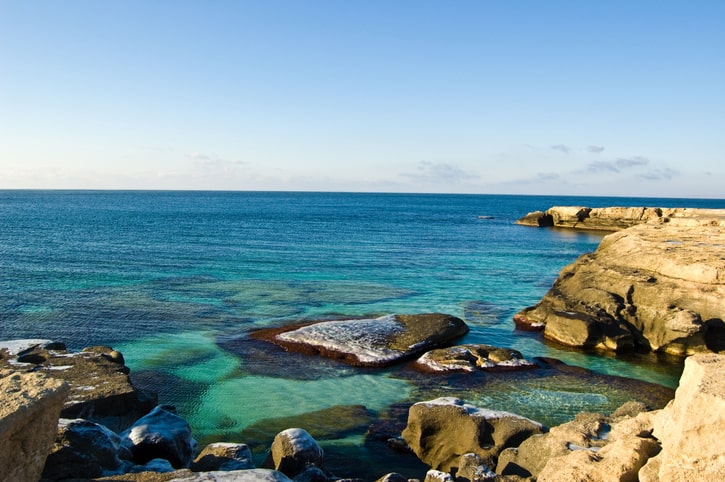
Area: 143,200 sq. mi, 371,000 sq. km Average Depth: 690 ft., 211 m. Greatest Known Depth: South Caspian Sea Depression — 3,360 ft., 1,025 m.
Sandwiched between the Caucasus and Central Asia, the Caspian Sea is the world’s largest body of inland water, sometimes called the world’s largest lake. It is part of an ancient body of water called the Paratethys Sea which once stretched from the Atlantic Ocean to the Aral Sea. The north of the lake is far colder than the south in climate, with the former freezing over in the winter. It holds 3.5 times the volume of water than all of the USA’s Great Lakes combined with the Volga River accounting for 80% of the Caspian’s inflow.
Ownership of the area has been contested for decades with Kazakhstan, Turkmenistan, Azerbaijan, Russia, and Iran all possessing coastlines on the Caspian Sea's waters. Due to the Caspian’s unclear status between a lake and sea, governance has been difficult to pin down. However, in 2018, the five states all agreed on common and equal shares of ownership over the surface waters. The seabed and related resources still remain undecided.
Oil and gas make up a large part of the Caspian’s economy with Baku existing as a major port for ships transporting fossil fuels. Tourism is more of a local industry whilst the ecological situation is recovering after years of pollution. There are 160 native fish species in the Caspian Sea, with 60% of those being endemic, meaning it has a high degree of environmental importance.
East China Sea
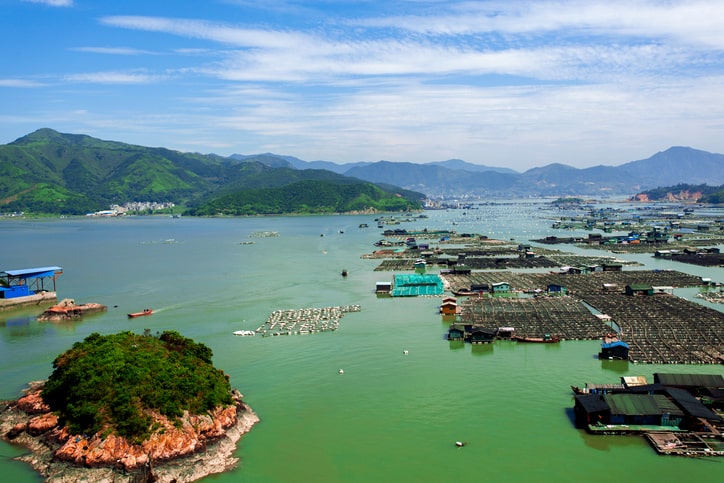
Area: 300,000 sq. mi, 770,000 sq. km Average Depth: 617 ft., 188 m. Greatest Known Depth: Okinawa Trough — 9,126 ft., 2,782 m.
The East China Sea is situated on the east coast of the Chinese mainland, bounded in the south by a series of Japanese islands and by South Korea in the east. Ownership of the Sea is shared by China, Japan, Taiwan, and South Korea although it is not a settled issue. All four countries are currently trying to extend their Economic Exclusion Zones so that they can control more of the associated resources and territories.
It is also an area of significant military tension. All four countries conduct regular military exercises on the surface as shows of force and symbolic ceremonies of ownership.
Mediterranean Sea
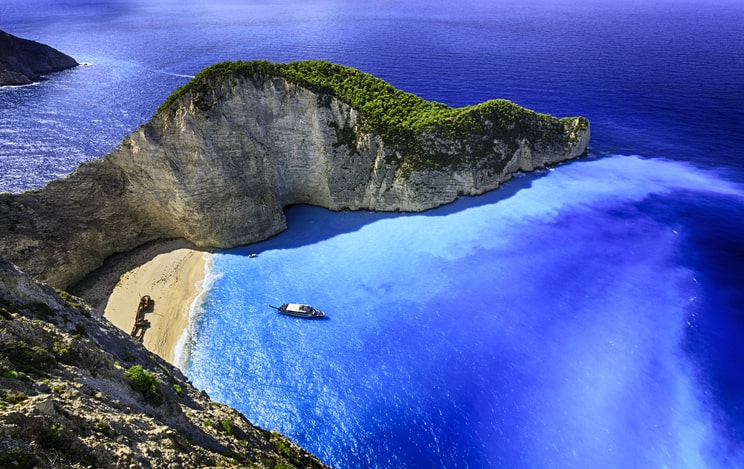
Area: 1,144,800 sq. mi, 2,965,800 sq. km Average Depth: 4,688 ft., 1,429 m. Greatest Known Depth: Calypso Deep — 17,380 ft., 5,267 m.
The Mediterranean Sea is almost entirely surrounded by land, except for the narrow Strait of Gibraltar at the western extent and the manmade Suez Canal in the southeast that runs through Egypt. European nations exist at the northern extent and North African countries make up the southern boundary.
There are 15 smaller marginal seas within the Mediterranean such as the Aegean and Adriatic Seas, highlighting both the vastness of the sea as well as the many geographical areas within it. The United Kingdom owns Gibraltar and therefore holds major geopolitical sway over the entrance to the Mediterranean, although Spain regularly argues its case for ownership of the island, therefore representing a significant point of tension.
For centuries, the Mediterranean has been central to the development and sustenance of European society and culture. The Romans maintained their hegemony through naval dominance of the sea and, along with their predecessors in Greece, laid the foundations for modern Europe. Fishing for species such as tuna and international tourism makes up a multi-billion dollar economic worth for the area, whilst it also sees a large amount of shipping that transits to the Pacific and Atlantic.
North Sea
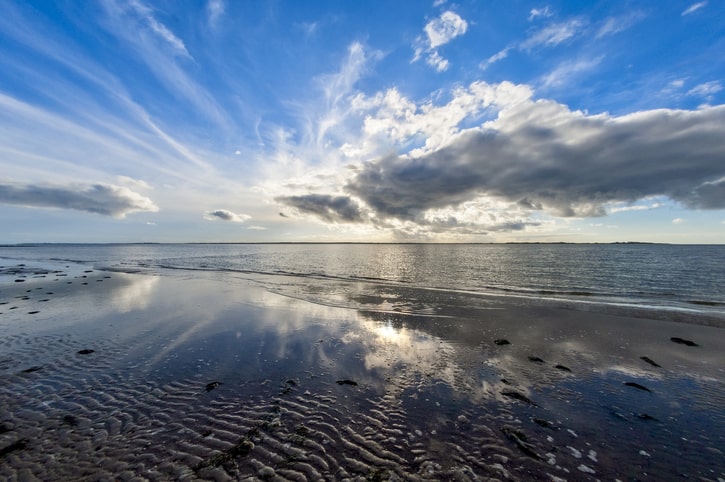
Area: 222,100 sq. mi, 575,200 sq. km Average Depth: 308 ft., 94 m. Greatest Known Depth: Norwegian Trench — 2,296 ft., 700 m.
The North Sea is an inland sea situated in Northwestern Europe, principally separating the UK from Norway, Denmark, Belgium, and the Netherlands. It is linked to the Atlantic Ocean via the English Channel, a narrow stretch of water running between southern England and northern France. It is a major fishery for Norway and the U.K. as well as holding major oil reserves near Scotland.
Overfishing was a major problem in the late 20th century and saw stocks of cod reach levels of near-extinction. Restrictions on catch numbers have seen these stocks recover slightly but not yet to their natural levels. Rays and Right Whales used to be frequent residents of the North Sea but were hunted to extinction.
The North Sea has also always been a key political focal point. Vikings made their empire by dominating the North Sea as an invasion point to the U.K. in the 11th century. During both World Wars, Germany’s main access to the ocean was through the North Sea and so many key battles were fought on its waters. After the war, the North Sea served as a dumping ground for chemical weapons which still lay on the seafloor today.
Red Sea
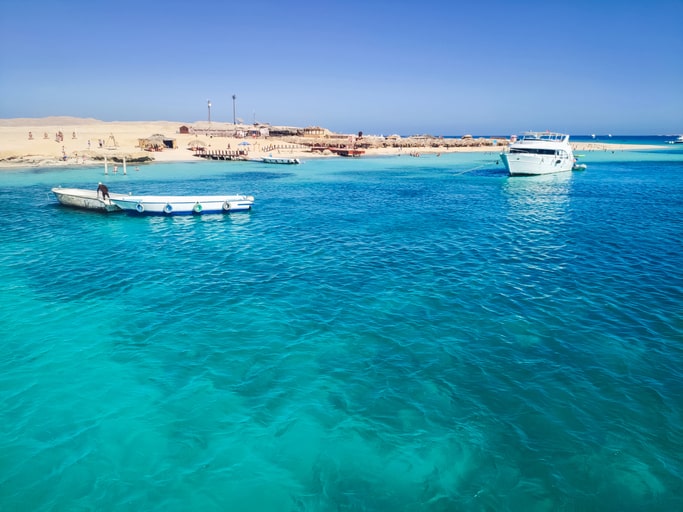
Area: 169,100 sq. mi, 438,000 sq. km Average Depth: 1,610 ft., 490 m. Greatest Known Depth: Suakin Trench — 9,970 ft, 3,040 m.
The Red Sea is a long, narrow body of water located between Egypt, Sudan, and Eritrea on the African side and Saudi Arabia in the Middle East. It is the northernmost tropical sea in the world and, as such, is home to a high level of biodiversity. There are over 1,200 different species of fish and extensive shallow lagoons that support healthy expanses of coral reefs. Of the fish, 10% are only found in the Red Sea and the Egyptian government set up a national reserve in order to protect them.
Other than its wildlife, the Red Sea is also incredibly important for international trade. The Suez Canal, which connects the Red Sea to the Mediterranean, ensures that over 10% of global trade goes through the Red Sea. Before the Suez Canal, ships had to travel around the south of Africa to get from Europe to the Indian Ocean. The Red Sea was also drawn into a major political dispute when the Suez Canal was closed by Egypt in 1967 in response to being invaded by France and the U.K. This led to soaring oil prices and a political crisis.
Sea of Japan
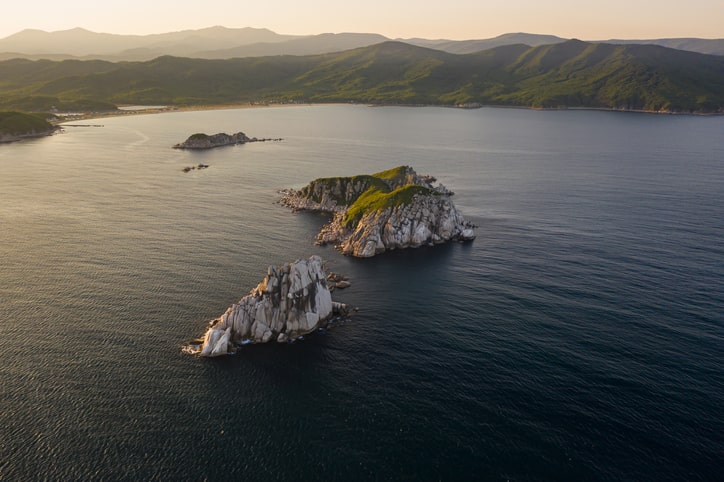
Area: 410,000 sq. mi, 1,050,000 sq. km Average Depth: 5,748 ft., 1,752 m. Greatest Known Depth: Japan Trench — 14,987 ft., 4,568 m.
Positioned between Japan, the Russian far east, and the Korean Peninsula, the Sea of Japan is known by different names by its surrounding countries. The sea was integral to preserving Japan’s freedom from Mongol invasions, including a series of convenient typhoons, and thus allowed the country to prosper.
In general, it is a tideless sea due to its enclosed nature and therefore has a lower level of salinity than the surrounding ocean. High levels of dissolved oxygen support high levels of biodiversity and as such, attract fishing vessels from Japan, South Korea, and Russia. Vladivostok, the eastern end of the Trans-Siberian Railway, is on the shore of the Sea of Japan and is a major port for trade tankers.
Sea of Okhotsk
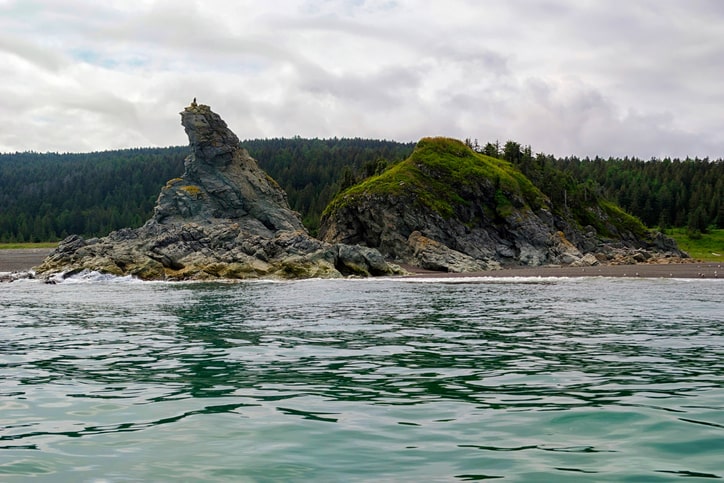
Area: 611,200 sq. mi, 1,583,000 sq. km Average Depth: 2,818 ft., 859 m. Greatest Known Depth: Kuril Basin — 11,063 ft., 3,372 m.
On the eastern side of Japan lies the Sea of Okhotsk which is enclosed around its north, east, and western edges by the eastern wing of Russia’s main continental landmass. It is named after the Okhotsk River which flows into the Sea of Okhotsk. In winter, the sea is partially blocked by ice floes caused by cold air masses. A small section of water in the middle of the Sea of Okhotsk, named the Peanut Hole, used to be a free-for-all for global fishing vessels until the area was declared Russian waters by the U.N. in 2013.
South China Sea
Area: 1,400,000 sq. mi, 3,500,000 sq. km Average Depth: 14,100 ft., 4,300 m. Greatest Known Depth: China Sea Basin- 16,457 ft., 5,016 m.
The South China Sea is a large body of salt water in South East Asia and is bounded by China in the north, Vietnam in the west, Malaysia to the south, and the Philippines to the east. It is an incredibly important strategic and economic location due to its proximity to China. Over the past few decades, China has tried to extend its claims over the South China Sea, much to the chagrin of other nations on the sea and their western allies.
China has also pursued a strategy of creating a series of new islands in the sea in order to claim ownership of the surrounding waters. This has caused much friction with the USA and Europe who view the moves as illegal. In response, the USA regularly sails military ships through the area amid regularly rising tensions. Fishing used to be a major industry but stocks have been severely depleted. There are extensive oil fields in the area but ownership of these is hotly contested.
Yellow Sea
Area: 150,000 mi, 380,000 sq. km Average Depth: 144 ft., 44 m. Greatest Known Depth: Off Jeju Island — 499 ft., 152 m.
The Yellow Sea is a small body of water, situated to the north of the East China Sea, tucked into mainland China near Qingdao and bordered on the east by the Korean Peninsula. It derives its name from the yellow color of silt discharged from its tributary rivers in China. It is a sea with high levels of seaweed and has regular algal blooms in the summer. Mudflats surrounding coastal areas are highly important habitats for over 35 species of migratory sea birds. Due to the dense population of industry on the coasts of the Yellow Sea, environmental degradation is very high resulting from chemical pollution. In combination with invasive species and land reclamation projects, the biodiversity of this sea is severely endangered.
Other Bodies of Water in the World

Some bodies of water are still very large but are classified in a different way to seas and oceans. Gulfs and bays are made up of an indentation in a landmass on the coast, whereas a sea is only partially surrounded by multiple different landmasses. Still, the following examples retain significance in political, environmental, and economic ways.
Gulf of Mexico
Area: 600,000 sq. mi, 1,550,000 sq. km Average Depth: 5,299 ft., 1,615 m. Greatest Known Depth: Sigsbee Deep — 14,383 ft., 4383 m.
The Gulf of Mexico is largely enveloped by the mainland USA and Mexico with Cuba bordering it in the southeast. The Florida and Yucatan straits that run past Cuba connect the Gulf with the Caribbean Sea and the wider Atlantic Ocean. The Gulf was formed when the Americas tore apart from Pangea and the originally dry land subsided into the sea.
The Gulf is a hotspot for tourism, especially from the USA with other economic aspects being petrochemical processing and routes for the shipping trade. The Bryde’s whale is classed as endemic to the area and exists as one of the most endangered whale species in the world. Increased discharges of agricultural chemicals containing nitrogen have led to a large increase in a hypoxic dead zone along the Texas-Louisiana coastline, greatly threatening wildlife in the area. Due to similar sources, algal blooms also regularly occur which further depletes oxygen in the water and thus the ability of fish to survive.
Hudson Bay
Area: 470,000 sq. mi, 1,230,000 sq. km Average Depth: 330 ft., 100 m. Greatest Known Depth: Near entrance — 890 ft., 270 m.
The Hudson Bay is situated in northern Canada and is almost entirely enclosed by the states of Ontario, Quebec, Manitoba, and Nunavut. Its outlet to the Atlantic Ocean is located at its northerly point where, through a series of islands, it flows out into the North Atlantic Ocean. In western society, it is named after sailor Henry Hudson who was the first Englishman to explore the area. The native indigenous Cree people know it as Winipekw which means muddy or brackish water. It is the second largest body of water labeled a bay after the Bay of Bengal in Asia.
The Hudson has a cold, polar climate meaning it is partially covered in sea ice during winter. This supports related wildlife such as polar bears, seals, and killer whales. The city of Churchill is the largest port on the Hudson’s shores and regularly ships grain to Atlantic trade vessels. A proposed trade route called the Arctic Bridge, which would see direct shipping lanes created through the arctic, is proposed to pass through the Hudson.
Northwest Passage
Area: 900 sq. mi, 1448 sq. km Average Depth: 104 ft., 32 m. Greatest Known Depth: Unrecorded
The Northwest Passage is not a sea in its own right but a shipping route that links the Pacific to the Atlantic by crossing the Arctic Ocean. It is seen by some as the Holy Grail of trading because it allows for much faster shipping between Asia and the West. However, until recently, the Passage was viable because, for much of the year, sea ice blocked the way. Now, due to climate change, the Arctic sea ice extent is reducing enough per year to make the route more sustainable.
There are disputes about who owns portions of the Passage. Canada claims the waters that pass through the northern Archipelago but the USA contends they are international waters. This has led to various contentious issues such as the USA sailing submarines through the waters as a demonstration of their beliefs. The melting ice has also provided an unforeseen passageway for animals to migrate through, such as gray and bowhead whales which were extinct in the Atlantic until they were recently sighted.
Persian Gulf
Area: 97,000 sq. mi, 251,000 sq. km Average Depth: 160 ft., 50 m. Greatest Known Depth: 26.455794, 56.336081 — 300 ft., 90 m.
The Persian Gulf sits at the heart of the Middle East. It is surrounded, apart from an outlet into the Arabian Sea at the southeastern extent, by the United Arab Emirates, Qatar, Bahrain, Saudi Arabia, Kuwait, Iraq, and Iran. The Strait of Hormuz is a narrow channel that runs past Muscat in Oman and out into the Arabian Sea. It is a major shipping lane for oil tankers destined for the Arab oil-producing countries and general cargo transport.
It has an abundance of pearl oysters and historically had a vibrant ecosystem. However, due to intensive industry on the coasts and numerous oil spills, biodiversity has taken several large hits to its stability. It was a major battlefield in the Iran-Iraq war but now exists as a major tourist destination thanks to the development of Dubai.
Oceans and Seas: A Bird's Eye View
In the absolute broadest terms, the earth's surface is mostly covered by a continuous body of saltwater known as the global ocean. But, do to variations in climate, weather, and wildlife, (and for the sake of being able to describe the locations of things) people have found it useful to divide the ocean into many constituent parts.
The following table lists the world's oceans and seas, according to area and average depth, including the Pacific Ocean, Atlantic Ocean, Indian Ocean, Southern Ocean, Mediterranean Sea, Arctic Ocean, Caribbean Sea, Bering Sea, and more.
| Name | Area | Average depth |
Greatest known depth |
Place of greatest known depth |
|||
|---|---|---|---|---|---|---|---|
| sq. mi. | sq. km | ft. | m | ft. | m | ||
| Pacific Ocean | 60,060,700 | 155,557,000 | 13,215 | 4,028 | 36,198 | 11,033 | Mariana Trench |
| Atlantic Ocean | 29,637,900 | 76,762,000 | 12,880 | 3,926 | 30,246 | 9,219 | Puerto Rico Trench |
| Indian Ocean | 26,469,500 | 68,556,000 | 13,002 | 3,963 | 24,460 | 7,455 | Sunda Trench |
| Southern Ocean1 | 7,848,300 | 20,327,000 | 13,100–16,400 | 4,000–5,000 | 23,736 | 7,235 | South Sandwich Trench |
| Arctic Ocean | 5,427,000 | 14,056,000 | 3,953 | 1,205 | 18,456 | 5,625 | 77°45'N; 175°W |
| Mediterranean Sea2 | 1,144,800 | 2,965,800 | 4,688 | 1,429 | 15,197 | 4,632 | Off Cape Matapan, Greece |
| Caribbean Sea | 1,049,500 | 2,718,200 | 8,685 | 2,647 | 22,788 | 6,946 | Off Cayman Islands |
| South China Sea | 895,400 | 2,319,000 | 5,419 | 1,652 | 16,456 | 5,016 | West of Luzon |
| Bering Sea | 884,900 | 2,291,900 | 5,075 | 1,547 | 15,659 | 4,773 | Off Buldir Island |
| Gulf of Mexico | 615,000 | 1,592,800 | 4,874 | 1,486 | 12,425 | 3,787 | Sigsbee Deep |
| Okhotsk Sea | 613,800 | 1,589,700 | 2,749 | 838 | 12,001 | 3,658 | 146°10'E; 46°50'N |
| East China Sea | 482,300 | 1,249,200 | 617 | 188 | 9,126 | 2,782 | 25°16'N; 125°E |
| Hudson Bay | 475,800 | 1,232,300 | 420 | 128 | 600 | 183 | Near entrance |
| Japan Sea | 389,100 | 1,007,800 | 4,429 | 1,350 | 12,276 | 3,742 | Central Basin |
| Andaman Sea | 308,000 | 797,700 | 2,854 | 870 | 12,392 | 3,777 | Off Car Nicobar Island |
| North Sea | 222,100 | 575,200 | 308 | 94 | 2,165 | 660 | Skagerrak |
| Red Sea | 169,100 | 438,000 | 1,611 | 491 | 7,254 | 2,211 | Off Port Sudan |
| Baltic Sea | 163,000 | 422,200 | 180 | 55 | 1,380 | 421 | Off Gotland |
The Earth's Many Waters
As you can see, the oceans and seas of the world are more complex than their surface waters may imply. However big or small they may be, they all have deeply entangled relationships with human society and the environment. Never before have oceans been changing as much as they are now due to the consequences of climate change. Sea level rises, acidification, pollution, and changes to ocean circulations present real threats not only to the stability of the seas but also to our known way of life.
If you want to find out more about how climate change is affecting the world’s future, dive into our overview of Global Warming.
| Mortals on Mount Olympus: A History of Climbing Everest | World Geography | Large Lakes of the World |
About the author







